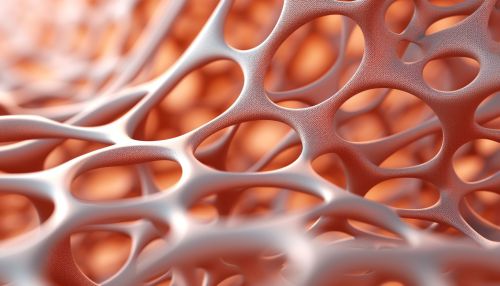Advances in Bioinspired Materials and Design
Introduction
Bioinspired materials and design, also known as biomimicry, is a rapidly evolving field that seeks to emulate nature's strategies and principles to create sustainable solutions to human challenges. The field has seen significant advances in recent years, with researchers developing new materials and designs that mimic the properties and functions of biological systems.
Bioinspired Materials
Bioinspired materials are materials that have been designed and engineered to mimic the structures, properties, and functions of biological materials. These materials can be found in a wide range of applications, from biomedical engineering to environmental engineering.


Structural Bioinspired Materials
Structural bioinspired materials are designed to mimic the mechanical properties of biological materials. For example, the structure of bone has inspired the design of lightweight, yet strong and tough materials. Bone is a composite material composed of a soft, flexible protein matrix (collagen) reinforced with hard, brittle mineral nanoparticles (hydroxyapatite). This combination of soft and hard components gives bone its unique mechanical properties, including high strength, toughness, and the ability to self-heal.
Functional Bioinspired Materials
Functional bioinspired materials are designed to mimic the functional properties of biological materials. For example, the lotus effect, where water droplets roll off the surface of a lotus leaf, has inspired the development of self-cleaning materials. These materials have a micro- and nano-structured surface that repels water and dirt, reducing the need for cleaning and maintenance.
Bioinspired Design
Bioinspired design involves the application of biological principles and strategies to the design of new products, processes, and systems. This approach can lead to innovative solutions that are more sustainable, efficient, and adaptable than traditional design approaches.
Biomimetic Design
Biomimetic design involves the direct imitation of biological structures and functions. For example, the design of Velcro was inspired by the way burrs stick to fur and clothing. The hooks and loops of Velcro mimic the hooks and spikes of burrs, allowing for a strong yet reversible attachment.
Bio-integrative Design
Bio-integrative design involves the integration of living organisms into the design process. For example, the use of Mycelium (the root structure of fungi) in the production of biodegradable packaging materials. The mycelium grows and binds together agricultural waste to form a strong, lightweight, and compostable material.
Advances in Bioinspired Materials and Design
The field of bioinspired materials and design has seen significant advances in recent years. These advances have been driven by improvements in our understanding of biological systems, advances in materials science and engineering, and the development of new fabrication and characterization techniques.
Advances in Bioinspired Materials
Advances in bioinspired materials have led to the development of new materials with improved properties and performance. For example, researchers have developed bioinspired materials that mimic the self-healing properties of skin. These materials can repair themselves when damaged, extending their lifespan and reducing the need for replacement.
Advances in Bioinspired Design
Advances in bioinspired design have led to the development of new products, processes, and systems that are more sustainable, efficient, and adaptable. For example, researchers have developed bioinspired designs for energy-efficient buildings that mimic the passive cooling strategies of termite mounds.
Future Directions
The field of bioinspired materials and design is expected to continue to grow and evolve in the coming years. Future research will likely focus on the development of new bioinspired materials and designs, the integration of bioinspired materials and designs into existing products and systems, and the exploration of new applications for bioinspired materials and designs.
